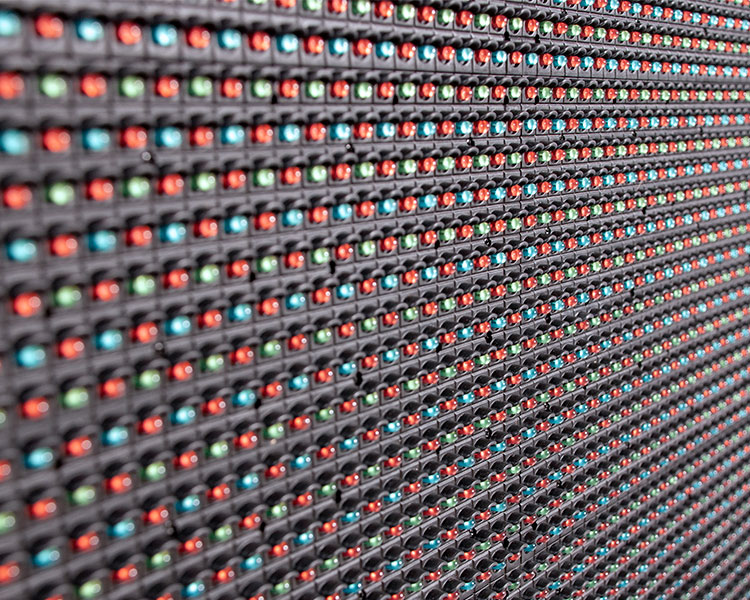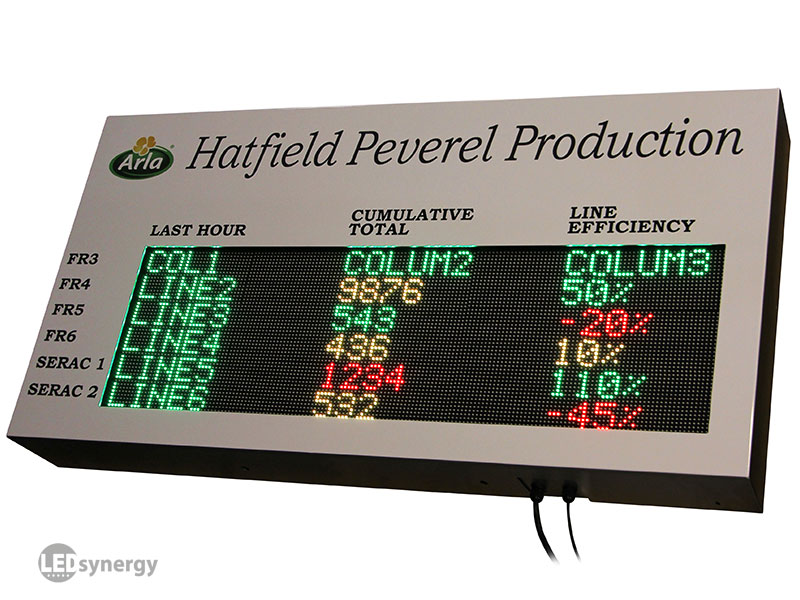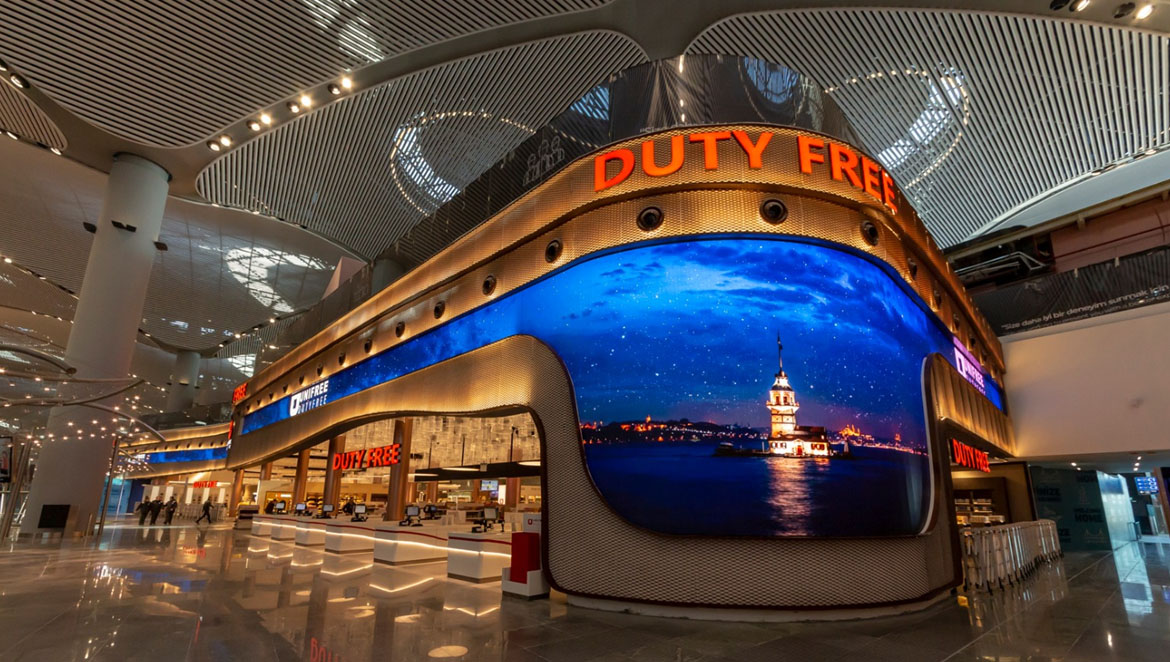Free News For Deciding On Outdoor Fixed Led Display
Free News For Deciding On Outdoor Fixed Led Display
Blog Article
What Is The Importance Of The Pixel's Pitch And Resolution In The Process Of Investigating Led Displays?
Pixel resolution and pitch are incredibly important factors when researching LED displays. These two factors directly impact the clarity, detail and overall experience offered by the display. This is why they are important in the first place:
1. Image Quality
Pixel Pitch Pixel pitch is defined as the distance between the center of one LED pixel and the center the next. A smaller pixel pitch means that the LEDs are more to each other, which results in higher pixel density and better resolution. This directly translates into clearer images with greater details, which are particularly crucial for content or text with finer specifics.
Resolution: The total number of pixels is shown on the screen. It is usually expressed in the form of height and width (e.g. 2048x1080). A higher resolution permits more details to be displayed and provides a more immersive experience. This is crucial when you have large screens where the user is near the screen.
2. Viewing Distance
The pixel pitch has a direct relationship with the ideal distance to view. A smaller size of pixel (and therefore a higher resolution) is necessary for displays that will only be seen from a close distance. This is the case for indoor screens, such as those employed in retail or in exhibitions. Conversely, for outdoor billboards and large-scale displays that are viewed from a distance greater pixel pitches may suffice as the individual pixels are not visible from afar.
3. Content Versatility
Displays that have smaller pixels and a higher resolution are able to display a wide variety of content. This includes high-definition movies, intricate graphics, and small text. This flexibility is essential for applications that need high-quality content, like broadcast studios, digital signage, or control rooms.
4. Costs
While a smaller pixel size provides better image quality, it can also increase the cost of the display. Higher resolution screens are more expensive to produce because of the higher amount of LEDs that are required. In order to find the ideal balance between price and high resolution you must consider the application as well as the distance to the screen.
5. Application Specificity
The significance and value of pixel pitch may differ depending on the device you're using
Indoor Displays: A smaller pixel pitch (e.g. 1.2mm to 2.4mm) is typically required to attain high resolution when viewed from close distances.
Outdoor Displays: Can feature larger pixel pitches (e.g., 4mm to 10mm) because they are viewed from greater distances, where high resolution might not be as important.
6. Longevity and Upgradability
Pixel pitch continues to decrease as technology for display improves. This allows for higher resolutions even in smaller spaces. If you invest today in a screen with the best pixel pitch that are more effective and relevant over a longer time. This will reduce the need to update frequently.
Conclusion:
Pixel pitch, resolution, and viewing experience are crucial to the efficiency of LED display, particularly with regard to image quality and versatility of content. When researching LED displays, be sure to consider these factors depending on the specific use, target audience, and budget, to ensure that you pick a display that meets your requirements effectively. Have a look at the recommended cob led display for blog advice including rental led display screen, led in walls, wall tv, video wall church, led display screen, led panel transparent, digital display, wall tv led, led on screen, led panels and more.
What Is The Importance Of The Refresh Rate In Researching Led Displays?
What is the importance of the Refresh Rate when researching LED Displays Refresh rates are an important factor to consider especially when investigating LED Displays to be utilized with dynamic content such as live broadcasts or interactive applications. What is the reason why the refresh rate is vital?
1. Image Clarity, Smoothness and Smoothness
Definition: The term "refreshrate" refers to the amount of times per second that the display update the image (measured in Hertz or Hz). More frequent refresh rates result in smoother motions and reduce flickering.
Importance: For displays showing video content, animations or images that are fast-moving, a high refresh rate (such as 3,840 Hz or higher) guarantees that the motion is smooth and without the stuttering or tear. This is particularly important for applications such as sports arenas or digital signage that require smooth visual performance. enhances the user experience.
2. Flicker Free Performance
Flicker: Displays with low refresh rates may produce noticeable flickering, especially when viewed by a camera that is slow-motion. The flickering can cause eyestrain and eye strain and make the viewing uncomfortable for long periods.
Application: In situations where the display is going to either be captured and film (such in studios for broadcasting) or recorded, such broadcasting facilities or events A high rate of refreshment reduces flickering to ensure that the footage is recorded without visual artifacts.
3. Visual Quality of Different Lighting Conditions
High refresh rates can affect the brightness of the display under various lighting conditions. For example when it is brightly lit, a higher refresh rate helps maintain image quality and uniformity and avoids any visible flickering, which can affect the performance of the display.
Application: This is especially relevant in outdoor displays, stage events, and other situations where the lighting conditions are constantly changing or are difficult to control.
4. Content Compatibility
Synchronization. The refresh rate must be in line with the content source like video replay systems, cameras, or live broadcast feeds. The experience of watching can be negatively affected if refresh rates of the display and content aren't properly synchronized.
Application: To ensure seamless playback in professional settings such as large-scale events or studios for TV, it is essential to ensure that the rate of refresh matches frame rates of the content.
5. Get the most enjoyable viewing experience
Motion Handling High-resolution refresh rates can reduce motion blur while providing a more clear, detailed image. This is helpful in scenarios such as gaming, sports broadcasting or other settings that display fast-moving motion.
Application: A high refresh rate is ideal for venues showing sports, games or other high-action material. The viewers can see each particular.
6. Reduced strain on the eyes
Comfort: Low refresh rates can cause eyestrain over long periods of viewing. This is most likely in environments where the user is close to display or content that has been watched for a long period of time.
Application: For retail environments office, public, or other places where people will be viewing the display for extended periods, a high refresh rate can lead to a more comfortable and engaging experience.
7. Performance in Rental and Staging Applications
Adaptability - For LED displays that are utilized to display various content in different environments A high refresh rate guarantees that the display can satisfy the requirements of any occasion. This is the case for live shows, corporate presentations or multimedia showcases.
Application High refresh rates are beneficial in settings where displays have to be able to adapt quickly to changes in content and requirements.
Conclusion:
The refresh rate has a direct impact on the visual quality, comfort and versatility of LED display. This is crucial for applications that have active content, live events, as well as for situations where the display is going to be used for an extended duration of time. When looking into the various LED display options, be sure you select high refresh rates to ensure a smooth and slick performance. This can enhance the user experience as well as meet the demands of your specific application. Follow the top rated led rental screen for website examples including video wall church, flexible led display, flexible led display, outdoor led panel, led light sign board, led wall tv, outdoor digital display, led light board, led display device, transparent screen monitor and more.
What Is The Importance Of Calibration And Color Accuracy In Research On Led Display?
Color accuracy and calibration are extremely important when researching LED displays, especially for applications where quality of image and brand integrity are essential. What are the significance of these aspects?
1. Visual Quality and Realism
Color Accuracy is the degree of precision with which an LED display reproduces colors in the manner the intended by content creators. High-quality color accuracy ensures that images and videos appear vibrant, realistic and look like they ought to.
Important Reproduction of colors is essential for applications like advertising, broadcasting, and retail. It can also help deliver the intended message.
2. Brand Integrity
Consistency in branding Businesses who rely on certain colors for branding the accuracy of color is crucial. An error in the color scheme could harm the image of the brand.
Application: Keeping brand colors in the right way when it comes to retail display, corporate and in advertising is vital to ensure uniform brand representation across all media and platforms.
3. Engagement and the Impact on Audience
Enhanced Viewer's Experience: Displays with outstanding color accuracy provide an immersive and stimulating atmosphere for the viewers. Color accuracy helps communicate emotions and messages more effectively, increasing overall impact.
Application: In places such as museums, entertainment venues or other places in which the aim of the material is to provoke certain emotions, color accuracy assures that the viewer will be able to experience the content in the intended way.
4. Content Creators' Intent
The work of artists, designers and content creators is usually based on certain colors. This ensures their work is portrayed exactly as they intended.
Application: When working in film, digital art photography, or any other field where color is an important aspect of aesthetics and storytelling, maintaining the accuracy of color can ensure that the creator's vision is taken into consideration.
5. Calibration to Consistency
The uniformity across panels. The calibration process ensures the LED panels are calibrated to provide consistent shades and brightness. This prevents any apparent gaps or mismatches. This is crucial when large displays are comprised of multiple panels.
Even the best displays will decrease in accuracy of color with time. Regular calibration is necessary to ensure consistent performance and ensure that the display is in line with quality standards.
Application Walls with video, large outdoor screens, or any multipanel setup need calibration in order to achieve a uniform, seamless look. This design is crucial for professional and high-profile installations.
6. Impact on content types
Diverse Content needs: Different kinds of content have distinct needs for accuracy in color. Displays for medical imaging, for example, require precise color to guarantee precise diagnosis. Advertising displays may place a higher priority on vividness and saturation.
Application: In specialized fields such as medical imaging, design, or retail with high-end features the ability to finely adjust color settings will ensure that the display is able to meet the requirements of the information it displays.
7. Technology and Specifications
Bit Depth and Gamut, as well as wide color gamut. Displays with high bit-depth and a wide color gamut (such as DCI P3 and Rec.2020) provide better color accuracy and can provide a wider spectrum of colors. 2020 ) can provide a wider spectrum of colors as well as greater color accuracy. When deciding on a display it is important to know these specifications.
Advanced Calibration tools: A majority of modern LED displays come with sophisticated calibration tools that include software. This allows for precise adjustments and guarantees that the display will remain accurate over time.
The investment in displays with excellent color accuracy is vital for industries such as high-end advertising and graphic design.
Conclusion:
It is important to ensure that LED displays are calibrated and feature precise color reproduction to create high-quality images that accurately reflect the intention of the designer and meet brand standards. A precise color reproduction, whether for entertainment, advertising, professional presentations or specialized fields, such as medical imaging is critical in achieving the desired result and maintaining visual integrity. When looking into LED displays, prioritize precision and accuracy in color particularly if your project requires precise color representation and consistency in performance. Have a look at the top lightweight led screen for site info including video walls, led display screen, led light sign board, led light sign board, flexible led display, led display rental, transparent led display screen, transparent led screen, outdoor led panel, led screen rental and more. 